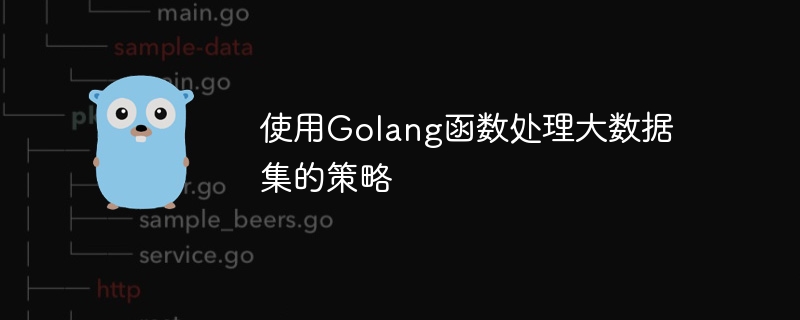
When dealing with large data sets in Golang, it is crucial to effectively use functional features. High-order functions (map, filter, reduce) can operate the collection efficiently. In addition, concurrent processing (goroutine and sync.WaitGroup) and streaming processing (channel and for-range loops) also effectively improve processing efficiency.

Strategies for using Golang functions to process large data sets
Use appropriate functional programming strategies when processing large data sets Crucial. Golang provides powerful functional features that enable you to effectively manage and operate big data.
Use common higher-order functions
map: Apply the function to each element in the collection, producing a new collection . filter: Filter the collection to produce a new collection that satisfies the given assertion. reduce: Accumulate the elements in the collection and generate a summary value. // 高阶函数处理大整数:
ints := []int{1, 2, 3, 4, 5}
// 映射:将每个元素平方
squaredInts := map(ints, func(i int) int { return i * i })
// 过滤:选择奇数元素
oddInts := filter(ints, func(i int) bool { return i % 2 != 0 })
// 归约:求总和
total := reduce(ints, func(a, b int) int { return a + b }, 0)Concurrency processing
goroutine: A lightweight thread that executes functions concurrently. sync.WaitGroup: Coordinate and wait for multiple goroutines to complete. // 并发处理列表:
list := []Item{...} // 假设Item结构代表大数据集中的一个项目
// 创建 goroutine 数组
goroutines := make([]func(), len(list))
// 使用 goroutine 并发处理列表
for i, item := range list {
goroutines[i] = func() {
item.Process() // 调用项目专属的处理函数
}
}
// 使用 WaitGroup 等待所有 goroutine 完成
var wg sync.WaitGroup
wg.Add(len(goroutines))
for _, g := range goroutines {
go func() {
defer wg.Done()
g()
}()
}
wg.Wait()Streaming
channel: A communication mechanism used to deliver data in parallel. for-range Loop: used to read data from the channel. // 使用通道进行流处理:
// 大数据集的通道
dataChan := make(chan Item)
// 读取通道并处理数据
for item := range dataChan {
item.Process()
}
// 在 goroutine 中生成数据并发送到通道
go func() {
for item := range list {
dataChan <- item
}
close(dataChan) // 完成数据发送时关闭通道
}()By leveraging these strategies, you can efficiently handle large data sets in Golang, improving the performance and scalability of your application.
The above is the detailed content of Strategies for using Golang functions to process large data sets. For more information, please follow other related articles on the PHP Chinese website!
